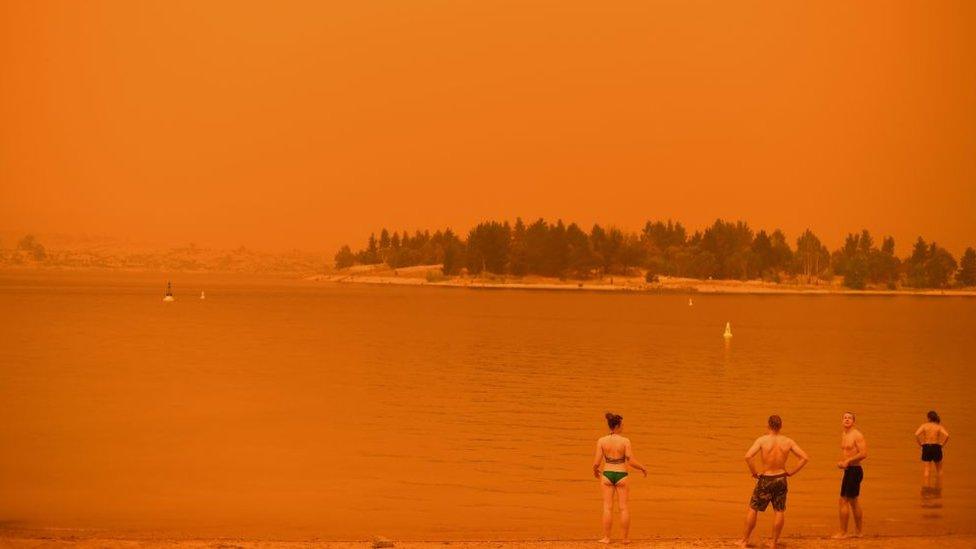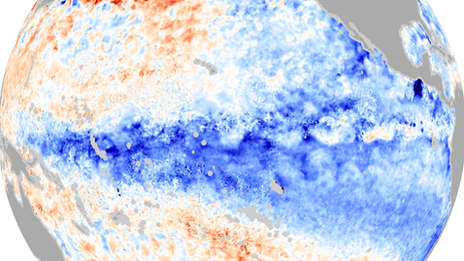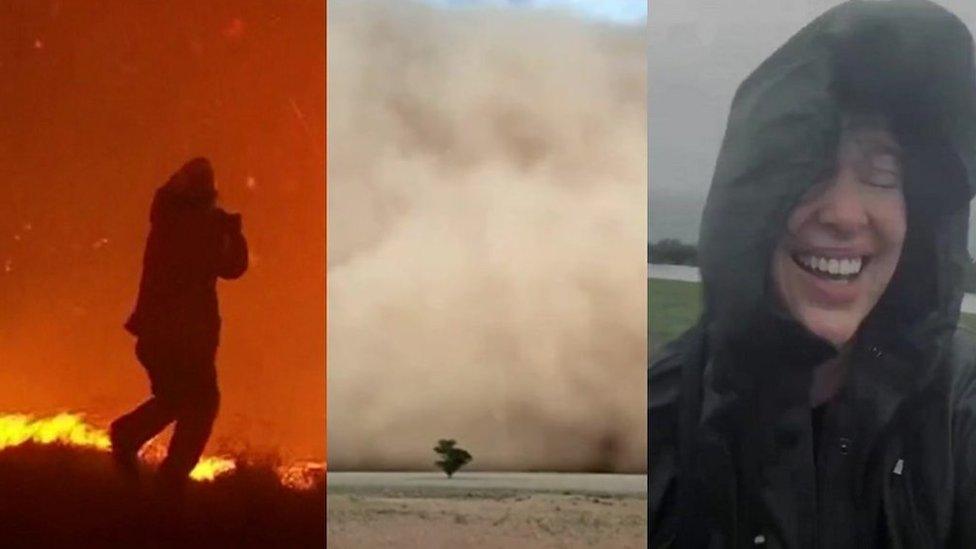Australia storms: Byron Bay's Main Beach 'all but disappeared'
- Published
A dog is rescued from under a sea of foam at Byron Bay as wild weather batters the country
Byron Bay's famous beach has all but disappeared, as extreme weather batters Australia's east coast, officials say.
Main Beach - a popular tourist destination - had already been depleted due to previous erosions.
But local mayor Simon Richardson said "severe weather" and "massive swells" were smashing what was left. "We're watching our beach disappear," he said.
A 1,000km (620 mile) stretch of coast is being hit with torrential rain and "abnormally high" tides.
More than 2,000 homes in cities, including Brisbane and the Gold Coast, lost electricity on Monday after strong winds struck power lines.
Tides up to 8m (26ft) high were recorded, eroding the shoreline in some areas, including Byron Bay.
Emergency services said they had received over 700 calls for help since Sunday. About half a dozen people stranded in floodwaters had been rescued, they added.
Meteorologists have warned that this Australian summer will see the impacts of a La Niña weather pattern, which typically brings more rainfall and tropical cyclones.
What's the latest?
The current wild weather has hit popular holiday spots such as the Sunshine Coast and the Gold Coast in Queensland.
In Byron Bay, in the state of New South Wales, pictures showed the beach covered with water and fallen trees.
"We're seeing the largest coastal erosion we've seen in many years, particularly around the Byron Bay area, which is completely changing the entire landscape of the beaches," Surf Life Saving NSW CEO Steve Pearce told reporters.
Allow X content?
This article contains content provided by X. We ask for your permission before anything is loaded, as they may be using cookies and other technologies. You may want to read X’s cookie policy, external and privacy policy, external before accepting. To view this content choose ‘accept and continue’.

Many beaches were closed on Monday amid the dangerous conditions.
Australia's Bureau of Meteorology issued severe weather warnings for a vast coastal area stretching from Hervey Bay in Queensland to Taree in New South Wales.
Affected areas have been alerted to damaging winds, flash flooding and hazardous surf.
Some places have already received more than 400mm of rain within 24 hours.
"At this stage, the widespread heavy rainfall is expected to ease late Tuesday or early Wednesday," the bureau said.
Allow X content?
This article contains content provided by X. We ask for your permission before anything is loaded, as they may be using cookies and other technologies. You may want to read X’s cookie policy, external and privacy policy, external before accepting. To view this content choose ‘accept and continue’.

The wet weather was also affecting Queensland's Fraser Island - a Unesco-listed World Heritage site. Just a week ago, major bushfires ripped through half of the island's dry bush.
"These are dynamic weather systems and you should always expect the unexpected," said bureau spokesman Justin Robinson.
In a report last week, BBC News looked at why Byron Bay is disappearing
Locals across the subtropical east coast hunkered down on Monday, with some sandbagging homes as they braced for floods.
In eastern Australia, the average December-March rainfall during a La Niña year is around 20% higher than the long-term average, says the Bureau of Meteorology.
Previous severe flooding events of 2010 and 1998 in Queensland were also associated with La Niña.

You may also be interested in:
Last summer: Australia’s 2019/2020 season of wild weather extremes
Related topics
- Published30 October 2020

- Published29 October 2020

- Published20 February 2020
